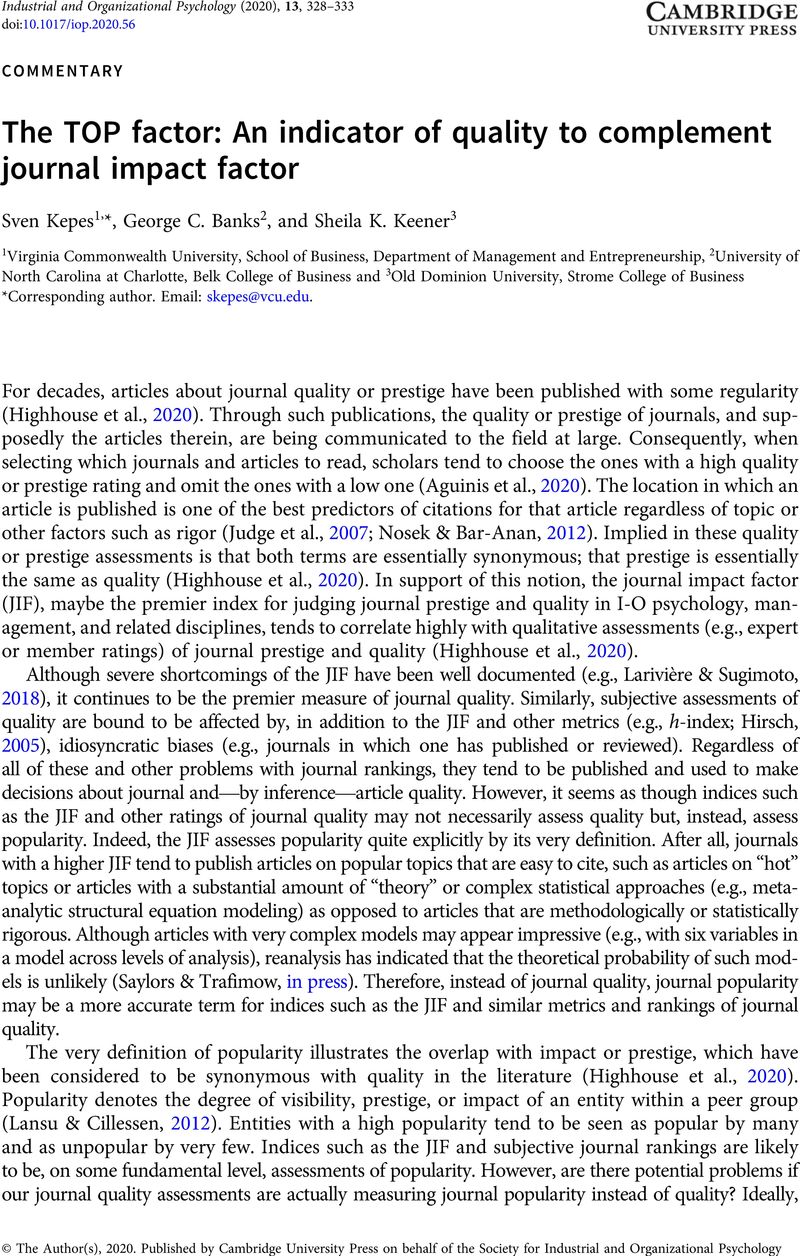Crossref Citations
This article has been cited by the following publications. This list is generated based on data provided by Crossref.
Schöpfel, Joachim
and
Kergosien, Éric
2021.
Les revues SIC et les données de recherche.
Balisages,
Kepes, Sven
Keener, Sheila K.
McDaniel, Michael A.
and
Hartman, Nathan S.
2022.
Questionable research practices among researchers in the most research‐productive management programs.
Journal of Organizational Behavior,
Vol. 43,
Issue. 7,
p.
1190.
Carsten, Melissa
Clapp-Smith, Rachel
Alexander Haslam, S.
Bastardoz, Nicolas
Gooty, Janaki
Connelly, Shane
and
Spain, Seth
2023.
Doing better leadership science via replications and registered reports.
The Leadership Quarterly,
Vol. 34,
Issue. 4,
p.
101712.
Grant, Sean
Mayo-Wilson, Evan
Kianersi, Sina
Naaman, Kevin
and
Henschel, Beate
2023.
Open Science Standards at Journals that Inform Evidence-Based Policy.
Prevention Science,
Vol. 24,
Issue. 7,
p.
1275.
Kianersi, Sina
Grant, Sean Patrick
Naaman, Kevin
Henschel, Beate
Mellor, David
Apte, Shruti
Deyoe, Jessica E.
Eze, Paul
Huo, Cuiqiong
Lavender, Bethany L.
Taschanchai, Nicha
Zhang, Xinlu
and
Mayo-Wilson, Evan
2023.
Evaluating Implementation of the Transparency and Openness Promotion Guidelines: Reliability of Instruments to Assess Journal Policies, Procedures, and Practices.
Advances in Methods and Practices in Psychological Science,
Vol. 6,
Issue. 1,
Keener, Sheila K.
Kepes, Sven
and
Torka, Ann-Kathrin
2023.
The trustworthiness of the cumulative knowledge in industrial/organizational psychology: The current state of affairs and a path forward.
Acta Psychologica,
Vol. 239,
Issue. ,
p.
104005.
Plante, Jacqueline
Langerwerf, Leigh
Klopper, Mareli
Rhon, Daniel I
and
Young, Jodi L
2024.
Evaluation of Transparency and Openness Guidelines in Physical Therapist Journals.
Physical Therapy,
Vol. 104,
Issue. 1,
Afraz, Ali
Chashmyazdan, Mohammadreza
Khajouei, Reza
and
Bagherinezhad, Zohreh
2025.
Literature Searches in Medical Informatics Systematic Reviews: Suggested Approaches.
Medical Reference Services Quarterly,
Vol. 44,
Issue. 1,
p.
17.



